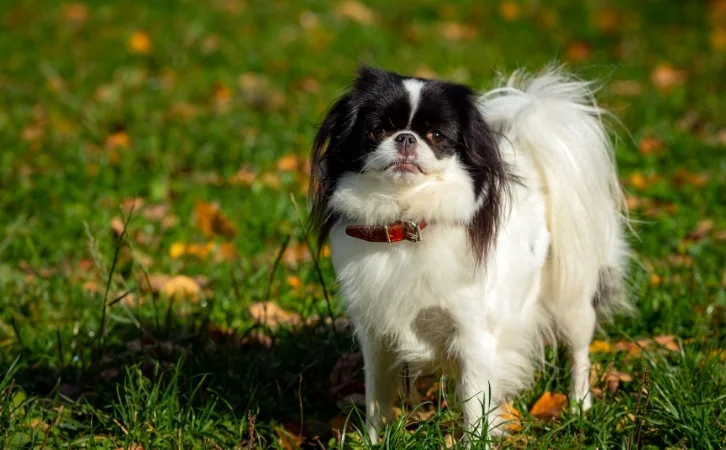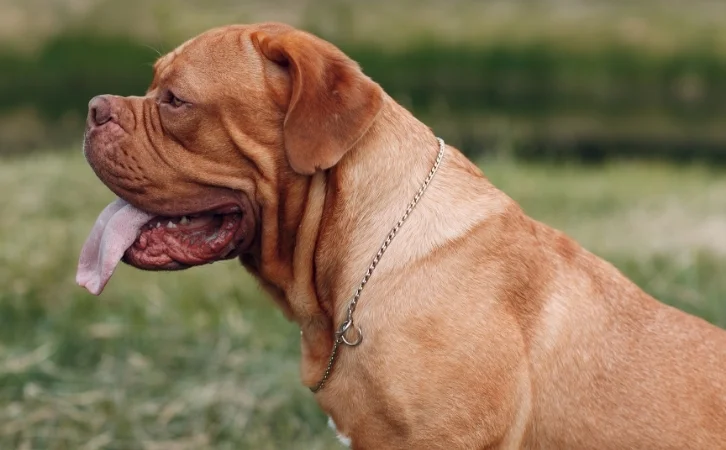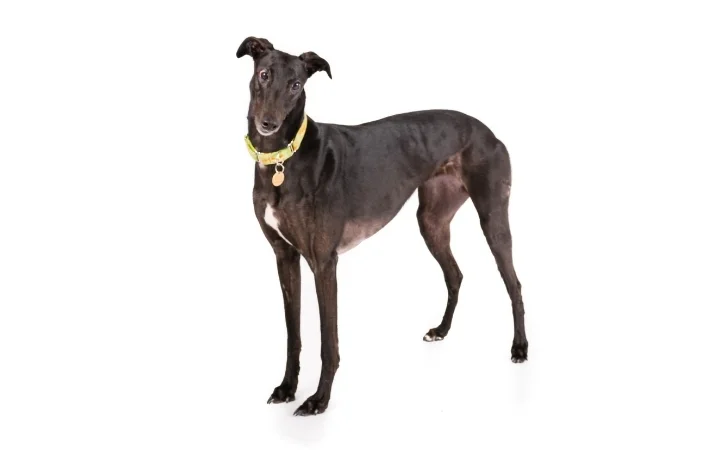Myanmar, also known as Burma, is home to several native dog breeds that have played a significant role in the country’s culture and history. These breeds have unique characteristics and are highly prized by the locals. Let’s explore the importance of native Myanmar dog breeds and detail their diversity and traits.
Table of Contents
The significance of native Myanmar dog breeds in the country’s culture and history
- Native Myanmar dog breeds have been a part of the country’s culture for centuries.
- These dogs have been used in various roles, including hunting, herding, and guarding.
- They have also been companions to the locals, providing loyalty and companionship.
- Native Myanmar dog breeds are often associated with religion and myths as guardians of temples and protectors against evil spirits.
- Their presence in the country’s culture and history highlights their importance to the people of Myanmar.
The diversity and unique characteristics of native Myanmar dog breeds
- Myanmar has diverse native dog breeds, each with distinct characteristics.
- The Chin, Nagaland, and Shan breeds are known for their hunting abilities and agility.
- The Bahein breed is renowned for its intelligence and ability to guard homes and livestock.
- The Myeik and Mawlamyine breeds are known for their loyalty and affectionate nature.
- Each breed has adapted to Myanmar’s unique climate and terrain, making them well-suited to its environment.
Read Here: Native Mozambique dog breeds
Basic Information of Native Myanmar Dog Breeds Table
| Breed | Characteristics | Usage |
| Chin | Agile, excellent hunters | Hunting, guarding |
| Nagaland | Strong, intelligent | Hunting, companionship |
| Shan | Fast, good trackers | Hunting, herding |
| Bahein | Alert, protective | Guarding, companionship |
| Myeik | Loyal, friendly | Companionship, guarding |
| Mawlamyine | Loving, protective | Companionship, guarding |
Note: The table above briefly overviews some native Myanmar dog breeds and their characteristics. Further research is advised for more in-depth information.
By understanding the significance and diversity of native Myanmar dog breeds, we can appreciate their role in the country’s culture and history. These dogs are valued for their abilities and the companionship and loyalty they provide to the people of Myanmar.
Read Here: Native Moroccan dog breeds
Chin Dog Myanmar dog breeds
Origin and history of the Chin dog breed

The Chin dog is native to Myanmar and has a long history there. These dogs have been a part of the local culture for centuries, primarily known for their hunting abilities and agility. The Chin breed has been highly valued by hunters for various purposes, including tracking and retrieving game.
Distinctive features and physical characteristics of the Chin dog breed
Chin dogs are known for their agility and speed, which makes them excellent hunters. They have a muscular build and medium-sized body. Their coats are typically short and dense, protecting the harsh climate of Myanmar. Chin dogs have a pronounced muzzle and alert ears, giving them a distinct appearance. They have a high prey drive and are known for their intelligence, making them quick learners.
Read Here: Native Montserrat dog breeds
Shan Mastiff Myanmar dog breeds
Origins and Historical Background of the Shan Mastiff

The Shan Mastiff, also known as the Burmese Mastiff, originates from the Shan State in Myanmar. This breed has been a part of the local culture for centuries, often used by shepherds and farmers as guard dogs for their livestock. The Shan Mastiff is believed to be a descendant of ancient Tibetan Mastiffs, who were brought to the region by Tibetan traders. Over time, the breed adapted to the rugged terrain and extreme weather conditions of the Shan State.
Physical characteristics and temperament of the Shan Mastiff
The Shan Mastiff is a large and powerful breed known for its strength and endurance. These dogs have a solid, muscular build, deep chest, and strong limbs. They have a double coat consisting of a dense outer layer and a soft undercoat, protecting against the cold. Shan Mastiffs have a square-shaped head and expressive eyes, often giving them a serious and noble expression. They are loyal, protective, and courageous in temperament, making them excellent guard dogs for their families and properties.
Burmese Greyhound Myanmar dog breeds
History and Origins of the Burmese Greyhound

The Burmese Greyhound, also known as the Burmese Hound, has a long history in Myanmar. This ancient breed is believed to have originated in the region around 1000 BC and has been valued for its speed, agility, and hunting skills. It is said to be a descendant of the ancient Tazi and Saluki breeds, which were brought to Myanmar by traders traveling along the Silk Road.
Distinctive physical features and traits of the Burmese Greyhound
The Burmese Greyhound is a graceful and elegant dog known for its slim and athletic build. These dogs have a streamlined body with long, muscular legs, allowing them to reach impressive speeds. They have a short, smooth coat in various colors such as black, fawn, or brindle. The Burmese Greyhound has a long, narrow head with a pointed muzzle and alert, expressive eyes. They are known for their keen intelligence, loyalty, and independent nature.
Taung Gyi Mastiff Myanmar dog breeds
Origins and historical significance of the Taung Gyi Mastiff
The Taung Gyi Mastiff, also known as the Burmese Mastiff, has a rich history in Myanmar. Believed to have originated around 1000 BC, this ancient breed has been valued for its strength, courage, and protective instincts. Traced back to the Tibetan Mastiff bred with local Burmese dogs, the Taung Gyi Mastiff became renowned for its ability to guard livestock and homes, making it an essential part of Burmese culture.
Physical characteristics and temperament of the Taung Gyi Mastiff
The Taung Gyi Mastiff is a large and muscular dog with a sturdy build. It has a broad chest, strong legs, and a wide head. Their dense double coat requires regular grooming to maintain its healthy appearance. This breed comes in various colors: black, brindle, or fawn. Taung Gyi Mastiffs are known for their protective nature, loyalty to their family, and affectionate demeanor. They require proper socialization and training from an early age to ensure they become well-behaved and balanced dogs.
Intha Dog Myanmar dog breeds
History and origins of the Intha dog breed
The Intha dog breed has a long history that can be traced back to the Inle Lake region in Myanmar. The dogs were traditionally bred by the Intha people, who used them for various purposes such as fishing, hunting, and guarding. With their keen senses and agility, the Intha dogs played an essential role in the daily lives of the Intha community.
Distinctive features and qualities of the Intha dog breed
Intha dogs are medium-sized dogs with a compact and muscular build. They have a short and dense coat in various colors such as black, brown, or tan. These dogs have a distinctive curled tail and expressive eyes. Known for their intelligence and loyalty, Intha dogs make excellent companions and are highly trainable. They are friendly and gentle, making them suitable for families and individuals. Additionally, their adaptability makes them well-suited to various environments and living conditions.
Rakhine Thahkyu Myanmar dog breeds
History and significance of the Rakhine Thahkyu breed
The Rakhine Thahkyu breed is believed to have originated in the Rakhine state of Myanmar. These dogs have a long history of being used by the Rakhine people for various purposes, such as hunting, herding, and guarding. The Rakhine Thahkyu breed played a crucial role in the daily lives of the Rakhine community, helping them with their agricultural activities and providing companionship.
Physical characteristics and temperament of Rakhine Thahkyu
Rakhine Thahkyu dogs are known for their medium to large size and muscular build. They have a thick double coat in various colors, including black, white, and tan. This breed has a strong and athletic body, enabling them to excel in various physical activities. Rakhine Thahkyu dogs are intelligent, loyal, and highly trainable. Their calm and gentle temperament makes them suitable for families and individuals looking for a reliable and versatile companion.
Kayan Dog Myanmar dog breeds
Origins and historical background of the Kayan dog breed
The Kayan dog breed has its origins in the Kayan region of Myanmar. The Kayan people primarily used these dogs for hunting and herding livestock. Known for their agility and intelligence, Kayan dogs were highly valued for their abilities to navigate rough terrains and assist in various tasks. These dogs played a significant role in the daily lives of the Kayan community, serving as companions, protectors, and loyal working partners. Their versatility and adaptability have made them popular beyond their place of origin.
Kayan Dog Myanmar dog breeds
Origins and historical background of the Kayan dog breed
The Kayan dog breed originated in the Kayan region of Myanmar. Used by the Kayan people for hunting and herding, these dogs were known for their agility and intelligence. They were highly valued for their ability to navigate rough terrains and assist in various tasks. Kayan dogs served as companions, protectors, and loyal working partners in the daily lives of the Kayan community. Due to their versatility and adaptability, these dogs have gained popularity beyond their place of origin.
ADORABLE Street Puppy at Myanmar Pagoda video
Conclusion Myanmar dog breeds
Importance of preserving and promoting native Myanmar dog breeds
Preserving and promoting native Myanmar dog breeds, such as the Kayan dog, is essential for several reasons:
- Preservation of cultural heritage: Native dog breeds are deeply intertwined with Myanmar’s local culture and history. By preserving these breeds, we maintain a link to our past and honor our traditions.
- Biodiversity conservation: Native dog breeds contribute to the overall biodiversity of our ecosystem. By preserving them, we ensure the continuity of unique genetic traits and characteristics specific to these breeds.
- Supporting local economies: Promoting native dog breeds can benefit local communities involved in breeding and caring for these dogs. It can provide income opportunities and help sustain rural livelihoods.
- Enhancement of genetic health: Native dog breeds have often evolved in specific geographical regions, adapting to the local environment and developing genetic resilience against common diseases. Preserving these breeds can contribute to maintaining a pool of diverse and healthy genes within the dog population.
- Preservation of working abilities: Native dog breeds, like the Kayan dog, have been traditionally bred for specific tasks such as herding or hunting. Preserving these breeds ensures their unique working abilities and skills are passed on to future generations.
The preservation and promotion of native Myanmar dog breeds are crucial for cultural, ecological, economic, and genetic reasons. By appreciating and valuing these breeds, we contribute to the rich tapestry of Myanmar’s heritage and ensure the continued existence of these remarkable dogs.
reference
Myanmar dog breeds


